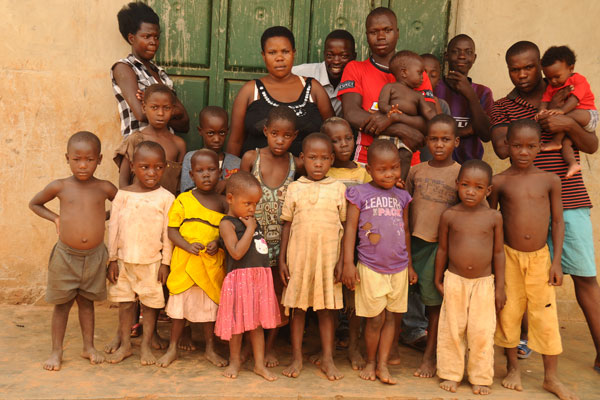Fertility is the reproductiveness of an individual and plays a major role in determining birth rate.

Birth rate plays a significant role in population growth. High population growths are usually attributed to high birth rates
Factors affecting Fertility and Birth rates
Several factors influence the fertility and birth rates of a country. Most high fertility and birth rates are experienced in developing countries such as Niger (TFR 6.49), Mali (6.01), Angola(6.16), China (once, but has decreased due to the One Child Policy), India and many others.

Literacy
Birth rates are high in rural areas than in urban areas particularly because of literacy. An educated person is very likely to produce few off-springs than an uneducated person. Family planning which involves the use of condoms, abstinence, pills, penis withdrawal is very low in rural areas.
Limited educational facilities and campaigns means that people lack the knowledge and know how of how to use such methods.
With the majority of rural people out of school and unemployed, the option will be to have more babies that will care for the parents in the future.
This is a perception that most people have.
In contrast, MEDCs have high literacy rates and as such people have careers to pursue than having large families. In addition, high usage of family planning methods and homosexuality in these countries reduces birth rate
Traditional beliefs and religion
Traditional beliefs of people determine the amount of children that will be produced. Some religions support large families for religious purposes e.g. Apostles and such religions also advocate for early marriages which increases birth rates.
Moreover, these types of religions restrict the use of family planning methods such as condom use. According to MICS 2014 survey Apostles had the lowest use of contraceptions (62%) in Zimbabwe
Labour
Most rural people will want to have more children for labour in the fields. It’s a different story in MEDCs were children are seen as expenses.
Endemics and Diseases
Endemic outbreaks such as the Ebola virus and diseases such as HIV/AIDS, typhoid and others causes high mortality rates. As such people will want to produce more children to secure their future.
Wars and Famines
Similar to diseases, wars and famines such as 1958-1961 Great Chinese Famine results in substantial lose of lives and many people will produce more for replacement and secure their generation survivability.
Age structure
Developing countries have a higher proportion of youths, thus birth rates tend to be high than in MEDCs which, in contrast, have a higher ageing population.
Political reasons
Governments may restrict (e.g. China One Child Policy) or promote high birth rates. Under Chairman Mao Zedong who advocated for more children for development, China rapidly increased its birth rates.
Conclusions
Birth rates have started to decline worldwide in recent years than in the past especially in LEDCs. For example, Zimbabwe has seen a drop in TFR from 1988 (5.4) to 2015 (4.0) and is still decreasing.
The increase in family planning methods, awareness and educational facilities in, not just urban areas, but rural areas too have significantly dropped birth rates.
In China, through the One Child Policy introduced in 1979, birth rates have significantly.
Although many countries are striving to reduce birth rates some are trying to increase it. MEDCs such as Singapore and Japan have a low birth and the replacement level is below the recommended 2.1.
These countries often experiences a reduced number of youths and higher proportion of elderly people. As such, these countries have a low working population which impacts the economy. Read Causes and Problems of an Ageing Population
